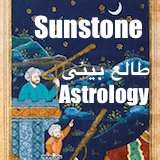The New Yorker:
A new book conveys in dramatic detail what America’s Moses did to help abolish slavery. Another addresses the love of God and country that helped her do so.
By Casey Cep
Just how far down did Moses go? The spiritual does not say, but one of the prophet’s namesakes—the woman who sang “Go Down, Moses” along the rivers and roads of the Eastern Shore of Maryland as she helped some seventy people escape slavery via the Underground Railroad—went as far south as she could. Harriet Tubman returned not only to the border state from which she herself had escaped; defiantly courageous, she ventured deeper into the land of bondage to liberate hundreds of others during the Civil War.
Her greatest feat may also be among her least known—a raid of Confederate rice plantations on the Combahee River, in the Lowcountry of South Carolina, which liberated more than seven hundred enslaved Americans. She did not lead the raid, as some recent histories suggest, but she was integral to its success. For more than a year, Tubman gathered intelligence from formerly enslaved men and women fleeing the Confederacy, and she recruited troops, scouts, and pilots from around Port Royal, South Carolina, to help the Union Army fight its way through enemy territory.
On the night of June 1, 1863, five months after the Emancipation Proclamation and a few weeks before the Battle of Gettysburg, Tubman accompanied Colonel James Montgomery and the newly freed men of the 2nd South Carolina Volunteers as they boarded three steamboats off the coast of Beaufort. Their paddle wheels turned quietly in the dark as the vessels advanced toward St. Helena Sound. From the pilot house of the lead steamer, Tubman watched a full moon rise, its light a welcome guide for the raiders as they avoided pluff mud and mines, following a serpentine, twenty-five-mile route up the river.
Go to link










Comments